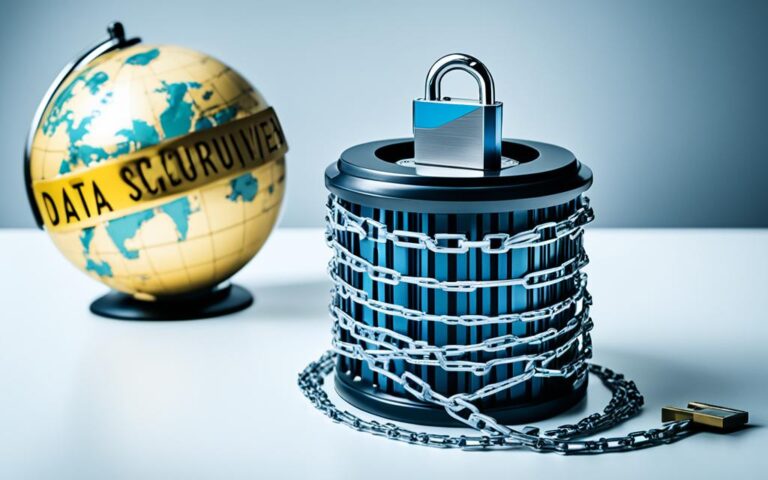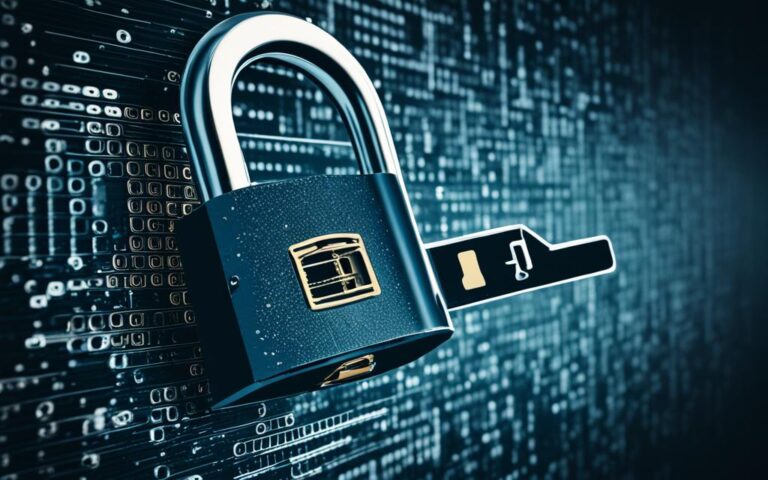How Data Destruction Contributes to a Comprehensive Risk Management Strategy
A comprehensive risk management strategy is crucial for organizations to safeguard their valuable data and protect against potential threats. In today’s rapidly evolving digital landscape, the risks associated with data breaches and insufficient data security have become more severe and frequent. One essential component that should be integrated into every risk management strategy is IT Asset Disposition (ITAD).
ITAD involves the secure and environmentally friendly reuse, recycling, and disposal of redundant IT assets. By including ITAD in their risk management strategies, organizations can effectively manage the risks associated with improper disposal of hard drives and IT assets, ultimately strengthening their overall data protection efforts.
Data breaches can have significant financial and reputational consequences for businesses. According to a recent study, the average cost of a data breach in 2021 was a staggering $4.24 million. Furthermore, nearly four out of every 10 businesses in the UK have experienced a data breach in the past 12 months. It is clear that organizations need to take proactive measures to protect their valuable data.
Secure Data Centre Services can play a crucial role in mitigating the risks associated with data centre decommissioning. By partnering with a reliable ITAD provider, organizations can ensure proper data destruction and compliance with data disposal laws. Considerations for including ITAD in a comprehensive risk management strategy include data security, auditable tracking processes, regulatory and corporate compliance, and environmental stewardship.
The Importance of Data Destruction for Risk Management Professionals
Risk management professionals must consider the risks associated with improper data disposal. A comprehensive risk management strategy should include the secure destruction of data. Data breaches caused by insufficient data security can have devastating financial and reputational consequences.
The average cost of a data breach in 2021 was $4.24 million. Nearly four out of every 10 businesses in the UK have experienced a data breach in the past 12 months.
IT Asset Disposition (ITAD) can help mitigate the risks associated with data breaches and improper disposal of IT assets. It involves the reuse, recycling, and disposal of redundant IT assets in a secure and environmentally friendly manner. Risk management professionals need to consider the risks posed by data centre decommissioning. Choosing a reliable ITAD partner is crucial for ensuring data security and compliance with regulations.
ITAD companies provide secure data disposal services and help organizations achieve their financial, environmental, and data privacy goals.
Proper data destruction plays a vital role in reducing the risks of data breaches and protecting sensitive information. It allows risk management professionals to safeguard their organizations’ financial resources and reputation. By partnering with trustworthy ITAD providers, businesses can ensure the secure disposal of IT assets and achieve compliance with data disposal laws.
Data destruction should be an integral part of a comprehensive risk management strategy, enabling businesses to mitigate the risks associated with improper data disposal and protect their data from unauthorized access or breaches.
Methods of Data Destruction for Effective Risk Management
In today’s digital landscape, where data breaches pose significant risks to organizations, implementing effective methods of data destruction is crucial for comprehensive risk management. By securely disposing of sensitive data, businesses can mitigate the potential financial and reputational consequences of data breaches. This section explores various methods of data destruction that enhance risk management strategies.
1. Overwriting
Overwriting involves replacing existing data with new data, rendering the original information irretrievable. This method is cost-effective and applicable to different storage media such as hard drives, solid-state drives, and USB drives. By selectively overwriting data, businesses can ensure that all sensitive information is completely removed.
2. Degaussing
Degaussing is a secure and efficient method of purging data from magnetic storage media, including hard drives and magnetic tapes. It involves removing or reducing the magnetic field of a storage disk or drive, rendering it unusable. Degaussing provides a quick solution for data destruction, protecting businesses against unauthorized access to sensitive information.
3. Physical Destruction
For the utmost security, physical destruction methods such as shredding or melting can ensure the absolute destruction of data. While this method is highly secure, it can be costly and environmentally unsustainable. Physical destruction is suitable for storage media that cannot be effectively overwritten or degaussed.
4. Cryptographic Erasure
Cryptographic erasure is an advanced data destruction method that involves encrypting the data and destroying the encryption keys. This method is particularly suitable for self-encrypting hard disk drives and solid-state drives. By encrypting the data and eliminating the encryption keys, businesses can ensure that the information is irretrievable and protected from unauthorized access.
Table: Comparison of Data Destruction Methods
| Data Destruction Method | Applicable Storage Media | Level of Security | Cost | Environmental Sustainability |
|---|---|---|---|---|
| Overwriting | Hard drives, solid-state drives, USB drives | High | Low | High |
| Degaussing | Hard drives, magnetic tapes | High | Moderate | Moderate |
| Physical Destruction | Various storage media | Highest | High | Low |
| Cryptographic Erasure | Self-encrypting hard disk drives, solid-state drives | High | Moderate | High |
Choosing the appropriate data destruction method depends on the type of storage media and the desired level of security. Organizations should consider cost, environmental sustainability, and compliance requirements when determining the most suitable approach to safeguard their data.
By implementing effective methods of data destruction, businesses can enhance their risk management strategies, protect sensitive information, and demonstrate compliance with data disposal regulations.
Proper Data Destruction and Compliance
Proper data destruction is essential for ensuring compliance with data disposal laws and regulations. It is the responsibility of businesses to handle data in accordance with recognized standards and verification methods. Compliance not only protects sensitive information but also safeguards against potential fines, legal repercussions, and reputational damage.
To achieve proper data destruction and comply with industry standards, data sanitization plays a crucial role. Data sanitization involves proving that data has been securely and effectively destroyed. Compliance standards such as the NIST SP 800:88 provide guidelines and specify appropriate sanitization techniques for data removal.
One of the essential aspects of data destruction compliance is obtaining a Certificate of Data Destruction. This certificate serves as tangible proof that data has been destroyed in a compliant manner. It helps businesses demonstrate their adherence to regulations and provides assurance to stakeholders regarding data privacy and security.
Failing to handle data correctly can have severe consequences. In addition to facing potential fines and litigation, businesses can suffer irreparable damage to their reputation. Data breaches are becoming increasingly frequent, making it imperative for organizations to focus on comprehensive risk management strategies that include secure data destruction practices.
Data destruction is not just a matter of good practice; it plays a critical role in safeguarding against unauthorized access and potential data breaches. By integrating data destruction into a comprehensive risk management strategy, businesses can mitigate the risks associated with data breaches and improper disposal of IT assets.
As part of compliance efforts, organizations must also prioritize maintaining and securely storing destruction certificates. These certificates are crucial for audits and chain of custody verification, ensuring transparency and accountability in the data destruction process. By adhering to proper data destruction practices and compliance requirements, businesses can protect themselves and their stakeholders from the potential consequences of data mishandling.
Conclusion
Data destruction is a critical component of a comprehensive risk management strategy. By incorporating ITAD practices into risk management strategies, organizations can effectively mitigate the risks associated with data breaches and improper disposal of IT assets. With the increasing frequency of data breaches and cyber-attacks, it is imperative for businesses to prioritize data destruction.
Proper data destruction methods, such as overwriting, degaussing, physical destruction, and cryptographic erasure, ensure that data is rendered irretrievable, safeguarding sensitive information from unauthorized access. Compliance with data disposal laws and regulations is essential and helps businesses avoid hefty fines and reputational damage. That’s why data destruction should be supported by the necessary documentation and certificates to prove compliance.
In conclusion, effective data destruction is crucial for data protection, compliance, and overall risk management. By incorporating secure data destruction practices, businesses can protect themselves from the financial and reputational consequences of data breaches and demonstrate their commitment to safeguarding sensitive information.
FAQ
Why should IT Asset Disposition (ITAD) be integrated into risk management strategies for all organizations?
ITAD helps manage risks associated with improper disposal of hard drives and IT assets, which can lead to data breaches with significant financial and reputational consequences for businesses.
What is IT Asset Disposition (ITAD)?
ITAD involves the reuse, recycling, and disposal of redundant IT assets in a secure and environmentally friendly manner.
Why is including ITAD in risk management strategies important?
Risk management strategies must adapt to the evolving threats of data breaches and insufficient data security. The increasing severity and frequency of data breaches highlight the importance of including ITAD in risk management strategies.
How can ITAD help mitigate risks associated with data breaches?
ITAD can help mitigate the risks associated with data breaches and improper disposal of IT assets by ensuring secure data disposal services and compliance with regulations.
What are some considerations for including ITAD in a risk management strategy?
Considerations for including ITAD in a risk management strategy include data security, compliance with data disposal laws, auditable tracking and processes, regulatory and corporate compliance, and environmental stewardship.
What are some methods of data destruction for effective risk management?
There are different methods for effectively destroying data, including overwriting, degaussing, physical destruction, and cryptographic erasure.
How does overwriting work as a data destruction method?
Overwriting involves replacing existing data with new data and is a low-cost option that can be done by software. It is suitable for various storage media and can be selectively done to ensure all sensitive data is removed.
What is degaussing and how does it work as a data destruction method?
Degaussing involves removing or reducing the magnetic field of a storage disk or drive, providing a secure and quick way to purge data from magnetic storage media. It can render a storage medium completely unusable and is suitable for hard drives and magnetic tapes.
What are physical destruction methods of data destruction?
Physical destruction methods, such as shredding or melting, can ensure the absolute destruction of data. While the most secure method, it can be costly and environmentally unsustainable.
What is cryptographic erasure as a data destruction method?
Cryptographic erasure is a highly advanced method that encrypts data and destroys encryption keys. It is suitable for self-encrypting hard disk drives and solid-state drives.
Why is proper data destruction and compliance important?
Proper data destruction is essential for compliance with data disposal laws and regulations. Failure to handle data correctly can result in fines, legal repercussions, and reputational damage.
Why is data destruction an integral part of a comprehensive risk management strategy?
Data destruction plays a vital role in a comprehensive risk management strategy as it contributes to data protection, compliance, and overall risk management for businesses.













